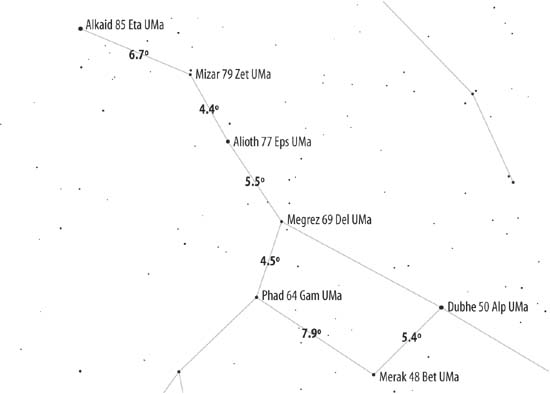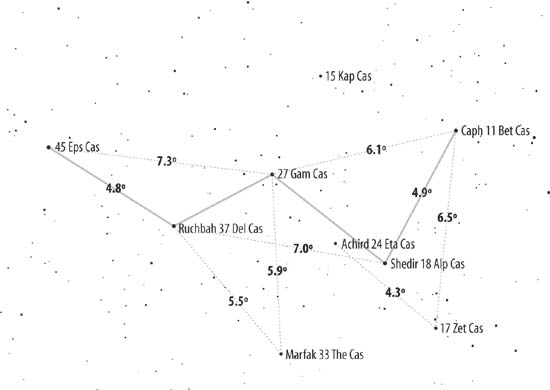Hack56.Determine Your Optical Finder s Field of View
Hack 56. Determine Your Optical Finder's Field of View
For simple pointing, the field of view doesn't matter, as long as it's wide enough for you to locate the object easily. For star hopping, it's important to know the field of view of your finder with reasonable accuracy. An optical finder serves two purposes. The obvious one is to help you point your scope at bright stars and other objects. The less obvious purpose is to provide a known field width when you are star hopping [Hack #21]. There are three ways to determine the field of view of your optical finder:
Most optical finders have fields of view between 4.5° and 8°. Fortunately, there are two prominent groups of stars that provide several bright star pairs with separations suitable for estimating your finder's field very accurately. The Big Dipper, shown in Figure 4-29, provides star pairs with separations from 4.4° to 7.9°. Figure 4-29. Use the Big Dipper to determine your finder field of view Cassiopeia, shown in Figure 4-30 provides bright star pairs with separations from 4.3° to 7.3°. Figure 4-30. Use Cassiopeia to determine your finder field of view The Big Dipper and Cassiopeia are both circumpolar, but on opposite sides of the pole. That means that when the Big Dipper is low, Cassiopeia is high, and vice versa. One or the other is always high enough to use to measure the field of view of your finder. |
EAN: 2147483647
Pages: 112